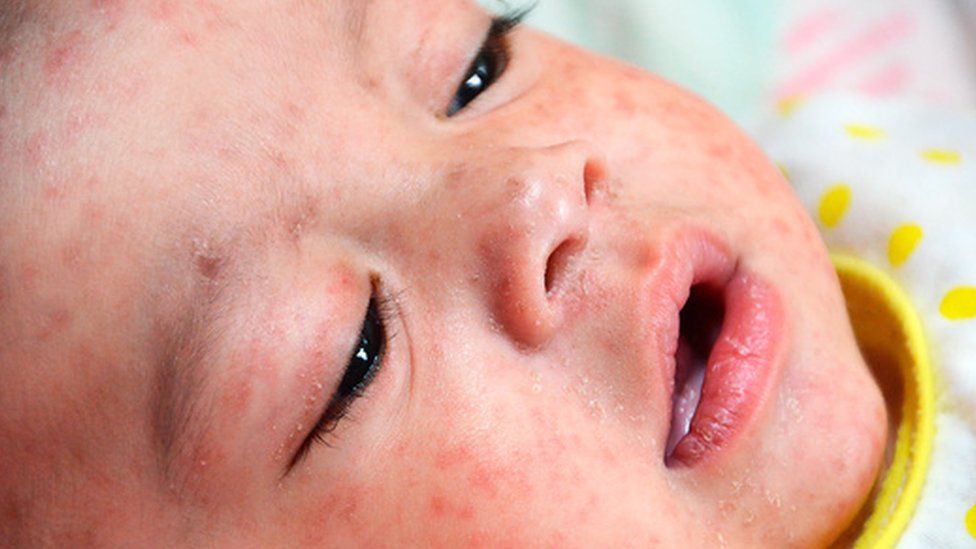Measles 'tragedy' kills 35 across Europe
- Published

Thirty-five people have died in the past year from measles outbreaks across Europe, the World Health Organization has warned.
It described the deaths - which can be prevented with vaccination - as an "unacceptable tragedy".
A six-year-old boy in Italy was the latest to die from the infection. More than 3,300 measles cases have been recorded in the country.
The most fatalities - 31 - have been in Romania.
But there have also been deaths in Germany and Portugal since June 2016.
Dr Zsuzsanna Jakab, the WHO regional director for Europe, said: "Every death or disability caused by this vaccine-preventable disease is an unacceptable tragedy.
"We are very concerned that although a safe, effective and affordable vaccine is available, measles remains a leading cause of death among children worldwide, and unfortunately Europe is not spared.
"I urge all endemic countries to take urgent measures to stop transmission of measles within their borders, and all countries that have already achieved this to keep up their guard and sustain high immunisation coverage."
Measles is highly contagious, but vaccinating 95% of the population should prevent it spreading.
Germany is looking at tightening the law on immunisations.
And the government in Italy is pushing for children to be vaccinated against 12 common illnesses before they can enrol for state-run schools.
Prime Minister Paolo Gentiloni blamed a decrease in vaccinations in part on a "spread of anti-scientific theories".
A lingering false belief that the measles, mumps and rubella (MMR) jab causes autism is largely to blame, despite the claims being disproven and the doctor who made them being struck off.
What is measles?
- Unvaccinated young children are at highest risk of measles and its complications, including death
- Measles is spread by direct contact and through the air by coughs and sneezes
- The virus remains active and contagious on infected surfaces for up to two hours
- The first signs of infection are usually a high fever and cold-like symptoms, such as a runny nose
- You may notice small white spots on the inside of the cheeks as well
- After several days, a rash develops, usually on the face and neck first and then spreading to the body and limbs
- An infected person can pass on the virus to others from four days prior to developing the skin rash to four days after the rash erupts
- There is no treatment, but two doses of vaccine can prevent infection in the first place
Follow James on Twitter.
- Published26 May 2017
- Published19 May 2017
- Published28 March 2017